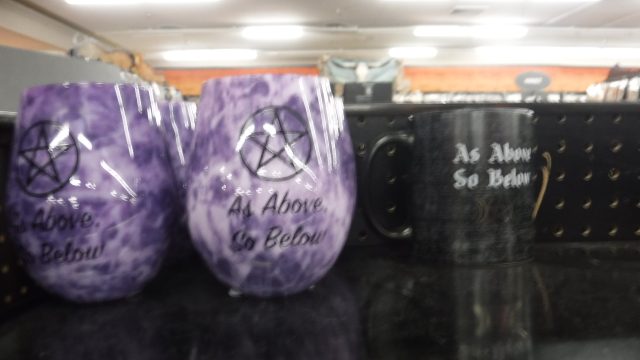Recently, I saw The Craft praised as an accurate portrayal of Paganism, which was a weird take given the filmmakers explicitly made a bunch of stuff up. Oh, there are plenty of things that are accurate enough—the idea of calling the corners is real, though the thing at the end about how you’d just kind of get together and do that for fun makes about as much sense as teenage girls going to mass for fun—but the description of the religion itself is made up for the movie. The fact is, there is no accurate pop culture representation of Paganism, even leaving aside the many varying faiths under the “Paganism” umbrella.
If the movie is set in ancient times, either the gods are real or else there’s vague lip service to the idea of the characters’ faith without anyone practicing faith the way it’s known that characters of that time and place would have practiced their religion. Sometimes, there isn’t even that much. How many movies set in Rome are there that never mention a single god by name? And then, of course, everyone is Christian for the next couple thousand years, which is accurate enough, when it comes to that, but you don’t even have the odd folk beliefs that flourished even under Christianity and were inspired by a pre-Christian past. Think the woman in American Gods who always left milk for the brownies and so forth.
Then, we get to the witch trials, and things get really bad. Most of the people I know who are really into Hocus Pocus are Christian and therefore can ignore the fact that the witches are explicitly said to have been in Salem and explicitly said to have been in league with the Devil. Now, no one killed (hanged; no one was burned at the stake in the US) in the Salem Witch Trials was actually Pagan. They were all Christian, and they were all the same sect as everyone else around them, Salem not being the slightest bit interested in freedom of religion. One of the victims was the actual minister, who died reciting the Lord’s Prayer because their belief was that witches physically couldn’t say it. It didn’t save his life.
Still, modern American Pagans draw a lot of their sense of history from things like the witch trials, even when they aren’t fully aware of the specifics in that sense. It is certainly true that Tituba, the enslaved woman whose religious beliefs were part of the early symptoms, was closer to what we think of as “witchcraft” than any of the others, and it’s further true that all those little folk traditions were one of the things that got people persecuted. It is also true that the insistence on rigid orthodoxy in other Christians is strong proof that the society wouldn’t have tolerated anyone espousing full-on Pagan beliefs. The closest we’ve ever seen to that nuance is ParaNorman, and even there the girl was really a medium.
In fiction set in the modern day, you have the choice of “Pagan to be made fun of” or “Pagan with no understanding of modern Paganism.” Very rarely, you’ll get a pretentious twit hipster type who says something about universal womanhood and the Power of the Feminine, and I’ll admit I’ve known one or two of those, though I’ve known a lot more Christians who never opened a Bible. No one just kind of is a Pagan because some people are in the way that you’ll get cultural Christians in movies, especially if there’s a wedding or funeral involved.
Even more egregious are the things where the characters are Pagan because that’s the plot of the movie. The Craft is its own thing, and there’s a lot I could say about that. But the other big pop culture portrayal of the religion, at least in theory, from that approximate era—possibly even building on the movie’s popularity to a certain demographic—is Charmed, a show I was enthusiastically recommended because the characters self-identify as Pagan. And then one of them gets married in a church. Not even a building that is somehow a Pagan church—an actual Christian church. Her only living family at the time, as I recall, is her two also-Pagan sisters, and I’m pretty sure she’s marrying an actual literal reformed demon—a concept that doesn’t really exist in most Pagan belief structures—and certainly isn’t culturally Christian.
Representation for Pagans is not even the representation of a group with whom I identify that I care about most; I’m much more concerned about representation for the mentally ill. Still, it can get frustrating, especially around Halloween. This month, I did my annual troll of the Spirit Halloween Store for a photo essay for my Patreon subscribers (not available on Ko-fi, but I might download and send you a copy?), and I was left kind of at a loss for what the Christian equivalent of having “As Above, So Below” cups at Halloween was. I’m quite sure the people who make all those crucifixes around Easter are more convinced you’re taking them seriously.

